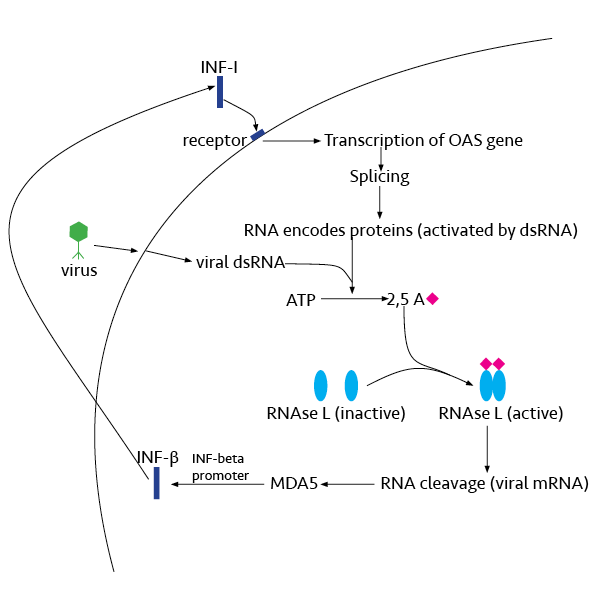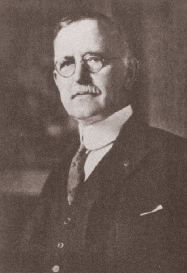|
Xenotropic Murine Leukemia Virus–related Virus
Xenotropic murine leukemia virus–related virus (XMRV) is a retrovirus which was first described in 2006 as an apparently novel human pathogen found in tissue samples from men with prostate cancer. Initial reports erroneously linked the virus to prostate cancer and later to chronic fatigue syndrome (CFS), leading to considerable interest in the scientific and patient communities, investigation of XMRV as a potential cause of multiple medical conditions, and public-health concerns about the safety of the donated blood supply. ''Xenotropic'' viruses replicate or reproduce in cells other than those of the host species. ''Murine'' refers to the rodent family Muridae, which includes common household rats and mice. Subsequent research established that XMRV was in fact a laboratory contaminant, rather than a novel pathogen, and had been generated unintentionally in the laboratory through genetic recombination between two mouse retroviruses during propagation of a prostate-cancer cell ... [...More Info...] [...Related Items...] OR: [Wikipedia] [Google] [Baidu] |
Retrovirus
A retrovirus is a type of virus that inserts a DNA copy of its RNA genome into the DNA of a host cell that it invades, thus changing the genome of that cell. Once inside the host cell's cytoplasm, the virus uses its own reverse transcriptase enzyme to produce DNA from its RNA genome, the reverse of the usual pattern, thus ''retro'' (backwards). The new DNA is then incorporated into the host cell genome by an integrase enzyme, at which point the retroviral DNA is referred to as a provirus. The host cell then treats the viral DNA as part of its own genome, transcribing and translating the viral genes along with the cell's own genes, producing the proteins required to assemble new copies of the virus. Although retroviruses have different subfamilies, they have three basic groups: the oncoretroviruses (oncogenic retroviruses), the lentiviruses (slow retroviruses) and the spumaviruses (foamy viruses). The oncoretroviruses are able to cause cancer in some species, the lentiviru ... [...More Info...] [...Related Items...] OR: [Wikipedia] [Google] [Baidu] |
Quasispecies
The quasispecies model is a description of the process of the Darwinian evolution of certain self-replicating entities within the framework of physical chemistry. A quasispecies is a large group or "cloud" of related genotypes that exist in an environment of high mutation rate (at stationary state), where a large fraction of offspring are expected to contain one or more mutations relative to the parent. This is in contrast to a species, which from an evolutionary perspective is a more-or-less stable single genotype, most of the offspring of which will be genetically accurate copies. It is useful mainly in providing a qualitative understanding of the evolutionary processes of self-replicating macromolecules such as RNA or DNA or simple asexual organisms such as bacteria or viruses (see also viral quasispecies), and is helpful in explaining something of the early stages of the origin of life. Quantitative predictions based on this model are difficult because the parameters that s ... [...More Info...] [...Related Items...] OR: [Wikipedia] [Google] [Baidu] |
Emerging Infectious Diseases (journal)
''Emerging Infectious Diseases'' (EID) is an open-access, peer-reviewed journal published by the Centers for Disease Control and Prevention (CDC). EID is a public domain journal and covers global instances of new and reemerging infectious diseases, putting greater emphasis on disease emergence, prevention, control, and elimination. According to Journal Citation Reports, the journal's 2016 impact factor is 6.99, ranking it 4th out of 82 journals in the infectious disease category. The journal also has a 2016 Google Scholar h5-index score of 79, ranking it 2nd in both the epidemiology category and among open-access epidemiological journals, as well as 4th in the communicable diseases category and 1st among open-access communicable disease journals. Abstracting and Indexing The journal is indexed in PubMed, MEDLINE, Web of Science: Science Citation Index Expanded The Science Citation Index Expanded – previously entitled Science Citation Index – is a citation ind ... [...More Info...] [...Related Items...] OR: [Wikipedia] [Google] [Baidu] |
Urology (journal)
''Urology'', also known as ''The Gold Journal'', is a monthly peer-reviewed medical journal covering urology and nephrology. It is published by Elsevier on behalf of the Société Internationale d'Urologie and the editor-in-chief is Eric A. Klein. It was established in 1973. Abstracting and indexing The journal is abstracted and indexed in Current Contents, EMBASE, MEDLINE, and Scopus. According to the ''Journal Citation Reports'', ''Urology'' has a 2020 impact factor The impact factor (IF) or journal impact factor (JIF) of an academic journal is a scientometric index calculated by Clarivate that reflects the yearly mean number of citations of articles published in the last two years in a given journal, as i ... of 2.649. References External links *Société Internationale d'Urologie website {{DEFAULTSORT:Urology (journal) Publications established in 1973 Elsevier academic journals Monthly journals English-language journals Urology journals ... [...More Info...] [...Related Items...] OR: [Wikipedia] [Google] [Baidu] |
Arginine
Arginine is the amino acid with the formula (H2N)(HN)CN(H)(CH2)3CH(NH2)CO2H. The molecule features a guanidino group appended to a standard amino acid framework. At physiological pH, the carboxylic acid is deprotonated (−CO2−) and both the amino and guanidino groups are protonated, resulting in a cation. Only the -arginine (symbol Arg or R) enantiomer is found naturally. Arg residues are common components of proteins. It is encoded by the codons CGU, CGC, CGA, CGG, AGA, and AGG. The guanidine group in arginine is the precursor for the biosynthesis of nitric oxide. Like all amino acids, it is a white, water-soluble solid. History Arginine was first isolated in 1886 from yellow lupin seedlings by the German chemist Ernst Schulze and his assistant Ernst Steiger. He named it from the Greek ''árgyros'' (ἄργυρος) meaning "silver" due to the silver-white appearance of arginine nitrate crystals. In 1897, Schulze and Ernst Winterstein (1865–1949) determined the structure ... [...More Info...] [...Related Items...] OR: [Wikipedia] [Google] [Baidu] |
Glutamine
Glutamine (symbol Gln or Q) is an α-amino acid that is used in the biosynthesis of proteins. Its side chain is similar to that of glutamic acid, except the carboxylic acid group is replaced by an amide. It is classified as a charge-neutral, polar amino acid. It is non-essential and conditionally essential in humans, meaning the body can usually synthesize sufficient amounts of it, but in some instances of stress, the body's demand for glutamine increases, and glutamine must be obtained from the diet. It is encoded by the codons CAA and CAG. In human blood, glutamine is the most abundant free amino acid. The dietary sources of glutamine include especially the protein-rich foods like beef, chicken, fish, dairy products, eggs, vegetables like beans, beets, cabbage, spinach, carrots, parsley, vegetable juices and also in wheat, papaya, Brussels sprouts, celery, kale and fermented foods like miso. Functions Glutamine plays a role in a variety of biochemical functions: * Pr ... [...More Info...] [...Related Items...] OR: [Wikipedia] [Google] [Baidu] |
Nature Genetics
''Nature Genetics'' is a peer-reviewed scientific journal published by Nature Portfolio. It was established in 1992. It covers research in genetics. The chief editor is Tiago Faial. The journal encompasses genetic and functional genomic studies on human traits and on other model organisms, including mouse, fly, nematode and yeast. Current emphasis is on the genetic basis for common and complex diseases and on the functional mechanism, architecture and evolution of gene networks, studied by experimental perturbation. According to the ''Journal Citation Reports'', the journal has a 2021 impact factor The impact factor (IF) or journal impact factor (JIF) of an academic journal is a scientometric index calculated by Clarivate that reflects the yearly mean number of citations of articles published in the last two years in a given journal, as ... of 41.379, ranking it 2nd out of 175 journals in the category "Genetics & Heredity". References External links Official websit ... [...More Info...] [...Related Items...] OR: [Wikipedia] [Google] [Baidu] |
Ribonuclease L
Ribonuclease L or RNase L (for ''latent''), known sometimes as ribonuclease 4 or 2'-5' oligoadenylate synthetase-dependent ribonuclease — is an Interferon type I, interferon (IFN)-induced ribonuclease which, upon activation, destroys all RNA within the Cell (biology), cell (both cellular and viral). RNase L is an enzyme that in humans is encoded by the ''RNASEL'' gene. This gene encodes a component of the interferon-regulated 2'-5'oligoadenylate (2'-5'A) system that functions in the antiviral and antiproliferative roles of interferons. RNase L is activated by dimerization, which occurs upon 2'-5'A binding, and results in cleavage of all RNA in the cell. This can lead to activation of MDA5, an RNA helicase involved in the production of interferons. Synthesis and activation RNase L is present in very minute quantities during the normal cell cycle. When interferon binds to cell receptors, it activates transcription of around 300 genes to bring about the antiviral state. Among ... [...More Info...] [...Related Items...] OR: [Wikipedia] [Google] [Baidu] |
Molecular Cloning
Molecular cloning is a set of experimental methods in molecular biology that are used to assemble recombinant DNA molecules and to direct their replication within host organisms. The use of the word ''cloning'' refers to the fact that the method involves the replication of one molecule to produce a population of cells with identical DNA molecules. Molecular cloning generally uses DNA sequences from two different organisms: the species that is the source of the DNA to be cloned, and the species that will serve as the living host for replication of the recombinant DNA. Molecular cloning methods are central to many contemporary areas of modern biology and medicine. In a conventional molecular cloning experiment, the DNA to be cloned is obtained from an organism of interest, then treated with enzymes in the test tube to generate smaller DNA fragments. Subsequently, these fragments are then combined with vector DNA to generate recombinant DNA molecules. The recombinant DNA is then in ... [...More Info...] [...Related Items...] OR: [Wikipedia] [Google] [Baidu] |
Cleveland Clinic
Cleveland Clinic is a nonprofit American academic medical center based in Cleveland, Ohio. Owned and operated by the Cleveland Clinic Foundation, an Ohio nonprofit corporation established in 1921, it runs a 170-acre (69 ha) campus in Cleveland, as well as 11 affiliated hospitals, 19 family health centers in Northeast Ohio, and hospitals in Florida and Nevada. International operations include the Cleveland Clinic Abu Dhabi hospital in the United Arab Emirates and Cleveland Clinic Canada, which has two executive health and sports medicine clinics in Toronto."Facts & Figures" Cleveland Clinic. Another hospital campus in the United Kingdom, Cleveland Clinic London, opened to outpatients in 2021 and is scheduled to fully open in 2022. Tomislav Mihaljevic is the president and CEO. Cleveland Cl ... [...More Info...] [...Related Items...] OR: [Wikipedia] [Google] [Baidu] |
University Of California, San Francisco
The University of California, San Francisco (UCSF) is a public land-grant research university in San Francisco, California. It is part of the University of California system and is dedicated entirely to health science and life science. It conducts research and teaching in medical and biological sciences. UCSF was founded as Toland Medical College in 1864. in 1873, it became affiliated with the University of California as its Medical Department. In the same year, it incorporated the California College of Pharmacy and in 1881 it established a dentistry school. Its facilities were located in both Berkeley and San Francisco. In 1964, the school gained full administrative independence as a campus of the UC system, headed by its own chancellor, and in 1970 it gained its current name. Historically based at Parnassus Heights with satellite facilities throughout the city, UCSF developed a second major campus in the newly redeveloped Mission Bay district in the early 2000s. '' U.S. N ... [...More Info...] [...Related Items...] OR: [Wikipedia] [Google] [Baidu] |




